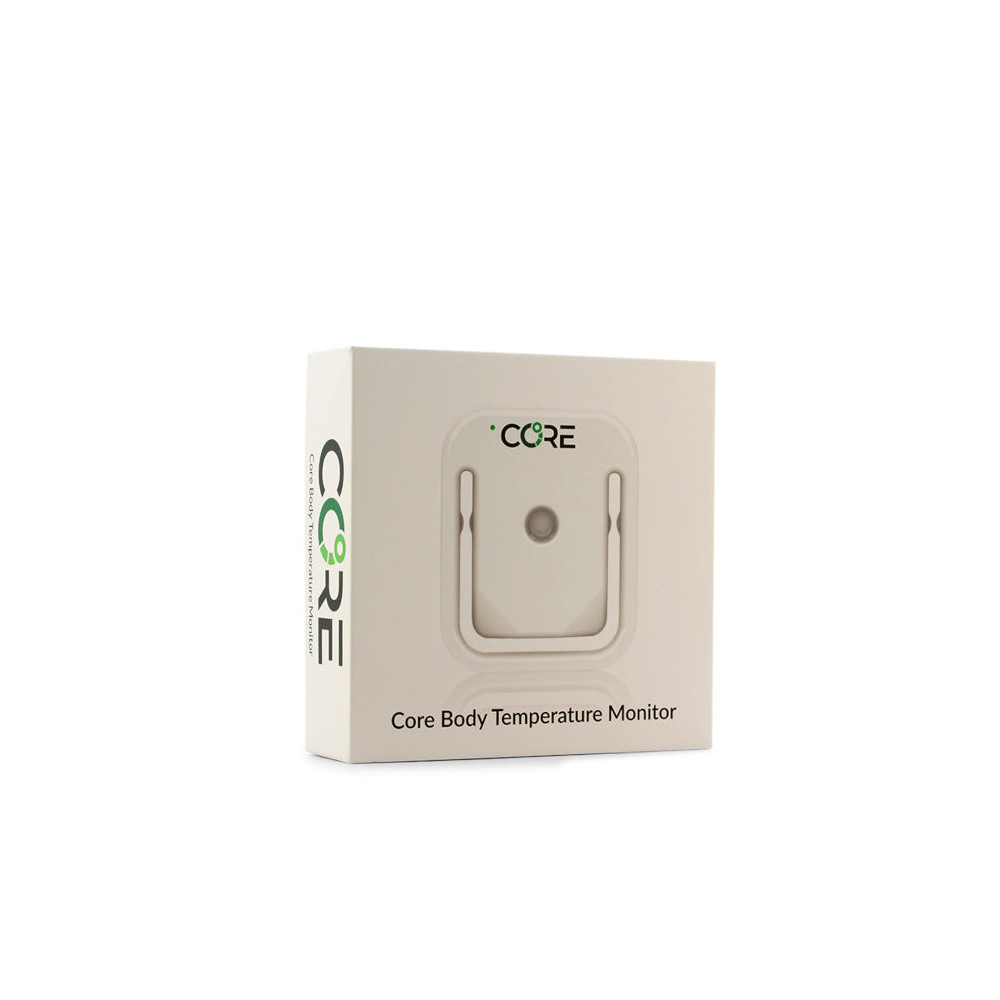CORE BODY TEMPERATURE MONITOR DEVICE
Why heat train?
Heat training prepares you for a hot race. You will build blood plasma, increase your sweat rate and
decrease the sodium in your sweat. This will result in a lower core temperature during training and racing.
This means you have less performance loss due to overheating.
If heat training is done throughout the entire season, you will build haemoglobin, allowing more blood to
be delivered to the muscles for greater performance.
Planning your heat training
A block of 10–12 heat sessions in 2 weeks will give quick adaptions to prepare you for a hot race. Or you
can do 2–3 heat sessions per week over 4–6 weeks.
You can maintain adaptions throughout the entire season with 2–3 heat sessions per week.
Haemoglobin gains require at least 5 weeks of heat training.
Once you are fully heat adapted, the benefits decrease by 2.5% for every day without heat training. When
tapering for a key race, coaches recommend 1–2 heat sessions in the week before the race.
The basics of a heat session
A heat session means keeping your core temp in your heat training zone for a continuous 45–60 minutes.
While the default heat training zone (38.4–38.6°C / 101.1–101.5°F) works for most people, it’s best to
find your own personal heat training zone.
With heat training, more is not better. Hotter core temperatures or longer durations don’t give greater
benefits and may cause excess fatigue.
A good heat session also has a high skin temperature. Look for a Heat Strain Index of 3.0–6.0.
If your first heat training sessions seems too challenging, then start with 20-minute sessions in your heat
zone and build up to longer durations.
How to get into your heat training zone
1. Riding the indoor bike trainer and running on the treadmill are great ways to do a heat session.
2. The room should be quite warm. While air temperature over 30°C/86° F is ideal, normal room
temperature also works if you dress in extra clothes. A CORE heat training suit can help you
quickly get into your heat training zone in cooler air temps.
3. Close windows and turn off fans.
4. After a 5–10 minute warmup, do a moderately-intense interval (perhaps zone 3 tempo) for 5–10
minutes to quickly raise your core temp.
5. Back off in intensity before you get into your heat training zone, as your core temp will continue
to climb.
6. When in your heat training zone, heart rate will be higher than normal for the given power/pace.
For example, you might be in zone 2 heart rate but zone 1 power.
7. Stay in your heat training zone for 45–60 minutes. Adjust pace and clothing to not exceed the
higher end of the zone.
8. Heat sessions can be extended by immediately entering a hot bath (40°C/104°F), sauna, or steam
room. Note that the CORE sensor does not give accurate readings in those settings.
Ways to Use Your CORE Sensor
Athletes use their CORE sensors in three primary ways:
1. Build heat awareness
2. Ensure they stay cool to prevent performance loss
3. Do heat training sessions
Build heat awareness
Building heat awareness lets you learn what causes your body to heat up, how you feel when that
happens, and how your performance declines.
Sample heat awareness workouts
1) Routine workouts outdoors. Monitor your core temperature and your Heat Strain Index.
Observe the following for each metric:
a) When do you start to sweat? And start to sweat heavily?
b) What is your comfort level at various core temps and Heat Strain Index values?
c) Notice the effect of high intensity on core temp.
d) When core temp is high but Heat Strain Index is low, (because of cool air temps), is that as
uncomfortable as the same core temp when Heat Strain Index is high?
2) Structured indoor workouts. Do these on the bike trainer or treadmill, and wear extra clothes
(or do them in a very warm room).
a) Warm up, and then keep a steady, sustainable power/pace (perhaps high zone 2 or zone 3).
b) As your core temperature and Heat Strain Index rise, notice how your heart rate rises even
though you’re keeping the same power/pace. This is called ‘heartrate decoupling’, and is
performance loss (you have to work hard to keep the same power/pace).
c) Observe your thermal comfort level at this point. Also notice how heavy you’re sweating.
Ensure you stay cool
When doing intense intervals or racing, you’ll want to stay cool so you don’t lose performance. Keep
your core temperature – and especially your Heat Strain Index – below the levels that cause
performance loss (as identified in the structured indoor workouts above).
Tips for staying cool
After intense efforts, core temp will continue to climb for a while. Anticipate overheating – try to
cool off before you reach threshold values that cause performance loss.
Be strategic – for example, before an upcoming hot climb, cool off as much as possible to create a
‘heat sink’.
The cooler the skin, the easier the core can cool itself.
After core temp is very elevated, it takes a long time to lower. Take cooling measures long before
you’re overheated!
Heat sessions
A heat session is 45–60 minutes in your heat training zone. Doing 2–3 heat sessions per
week will cause long-term adaptions.
Riding the indoor bike trainer and running on the treadmill are great ways to do a heat
session.
The room should be quite warm. While air temperature over 30°C/86° F is ideal, normal
room temperature also works if you dress in extra clothes. A CORE heat training suit can
help you quickly get into your heat training zone in cooler air temps.
Close windows and turn off fans.
Easy ride/run
1) After a 5–10 minute warmup, do a moderately-intense interval (perhaps zone 3 tempo) for 5–10
minutes to quickly raise your core temp.
2) Back off in intensity before you get into your heat training zone, as your core temp will continue
to climb.
3) When in your heat training zone, heart rate will be higher than normal for the given power/pace.
For example, you might be in zone 2 heart rate but zone 1 power.
4) Stay in your heat training zone for 45–60 minutes. Adjust pace and clothing to not exceed the
higher end of the zone.
5) Heat sessions can be extended by immediately entering a hot bath (40°C/104°F), sauna, or
steam room. Note that the CORE sensor does not give accurate readings in those settings.
After intense intervals
1) Do your planned high intensity workout wearing normal clothing and using fans. Your core temp
will elevate, but your Heat Strain Index should stay relatively low.
2) After the high intensity portion is over, turn off fans and add layers of clothes.
3) Reduce intensity to zone 1 or zone2.
4) Core temp should stay elevated and Heat Strain Index should rise to between 3.0 and 6.0. This is
likely in your heat training zone.
5) Stay in your heat training zone for 45–60 minutes.





